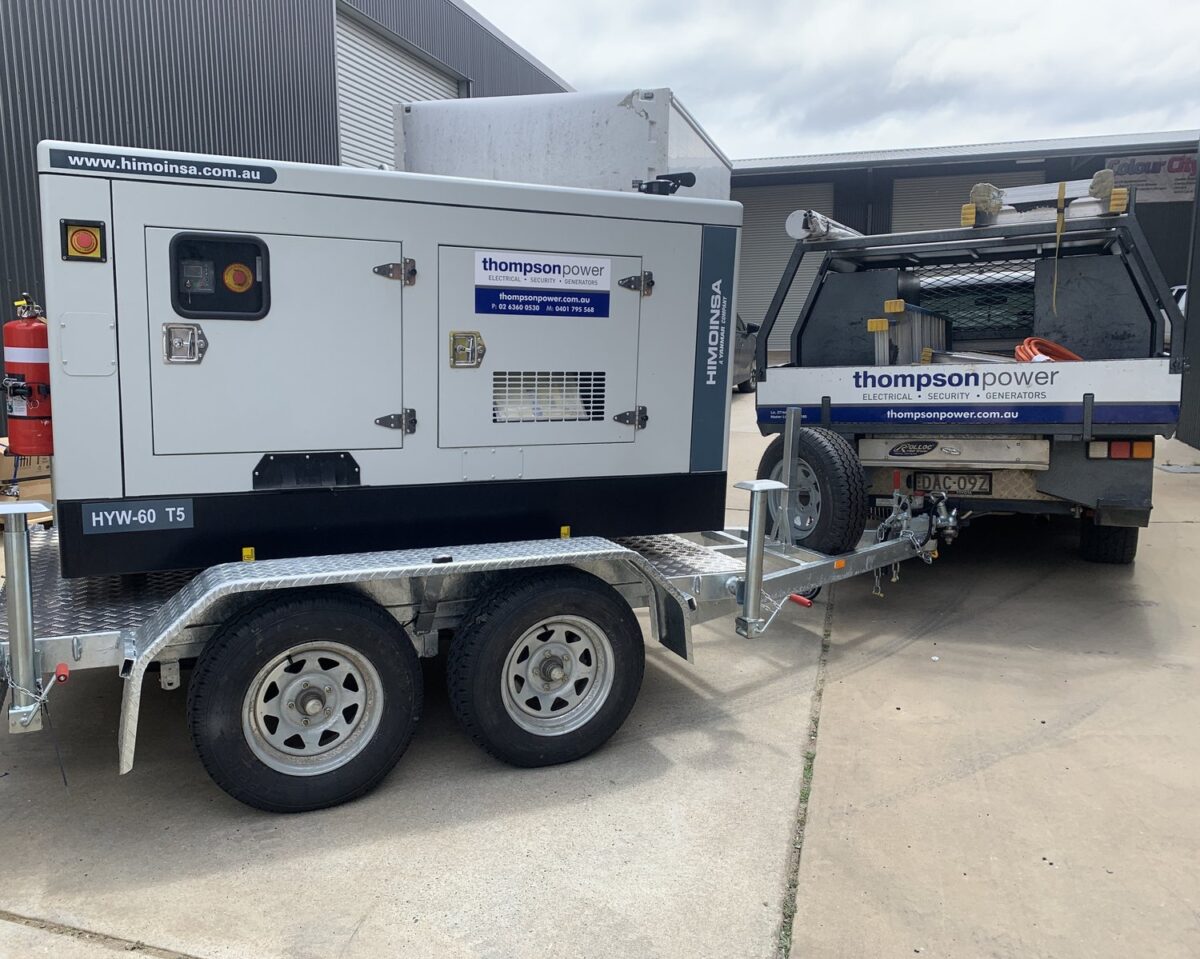What Size 3 Phase Generator Do I Need?

Most commercial sites need a 3 phase generator rated to provide 20kVA, 60kVa, 100kVA, 125kVa or 500kVA of power. Three-phase generators are capable of providing electricity at both 240V and 415V. The additional current is required for demanding loads like factory machinery, event infrastructure and healthcare equipment.
To calculate what size 3 phase generator you need, you’ll have to assess the power requirements of your equipment. You can use the table below to estimate how much power your business consumes:
Business Size Power Consumption (per hour)
Small businesses Up to 3.5kW
Medium businesses 17kW to 115kW
Large businesses 15kW to 877kW
For reference, a 20kVA three-phase generator can provide approximately 16kW per hour. So, most medium and large businesses require generators that are rated to deliver 100kVA or more.
What Size Generator Do I Need for a Business?
Keeping your business powered is critical. To make sure you’re always connected, we typically recommend generators that are rated at 20kVA or higher. Larger commercial generators are commonly available with capacities of 20kVA, 60kVa, 100kVA, 125kVa through to 500kVA.
The actual generator size you need varies depending on your industry, the equipment you’re powering and whether the generator is being used as a backup or a primary power source. You’ll also need to consider where and when you operate. Some commercial-grade generators are mounted on trailers, making them a portable option for events, agriculture and construction needs.
What Size Generator Do I Need for a House?
Most houses can be powered with a generator that’s rated between 5,000 to 7,500 watts. These small generators provide ample power for everyday appliances like water heaters, stoves, fridges and household lights. You may need a bigger generator if you have a large house or a demanding appliance like ducted air conditioning or electric vehicle chargers.
Your home may only need a single-phase generator. Single-phase generators produce 240V electricity that can be used to power all common appliances. You only need a three-phase generator for your home if your property has the appropriate wiring. You’ll need to check with your electrician if you want to use a 3-phase generator to power specialist equipment such as a welder or Level 2 EV charger.
How to Choose the Right Generator Size
To figure out the right size generator for your property, you’ll need to complete a comprehensive audit of all appliances, equipment and machinery on site. The process itself is relatively straightforward:
- Assess your equipment and make a list of the loads that need to be powered by the generator
- Record the normal power consumption of each device (this is shown on the manufacturer’s tags or the equipment manual)
- Record the starting wattage of large machinery and appliances like electric motors
- Calculate the maximum amount of power the system can consume
The maximum power consumption of the system is calculated as follows:
Running Watts + Starting Watts = Total Watts
We also recommend adding an extra 25% capacity to ensure the system always has enough power:
Total Watts x 1.25 = Minimum Generator Size
This sounds simple enough, but performing this type of audit can be a major task if you run a large business. The best way to choose the right generator size is to work with a professional team. Qualified electricians can develop a comprehensive equipment schedule to ensure every item has the power it needs.
If you’re unable to calculate your power requirements yourself, Thompson Power is able to support you with this.
The Importance of Choosing a Large Enough Generator
Choosing the right generator isn’t just a question of powering your business – it also minimises the risk of damage and injury. Undersized generators won’t be able to provide the power you need. Worse still, overloading a generator can damage the generator, your equipment and any other assets attached to the circuit.
When choosing a generator it’s important to select an option that provides redundancy. Factoring additional capacity into your backup system:
- Protects your generator bank from being overloaded
- Extends the life of your generators
- Avoids unnecessary damage to equipment
- Provides room for your electrical systems to grow and change
- Improves the efficiency of generators
The amount of redundancy you need depends on the application. We normally recommend building in an additional 25% capacity. For large systems with multiple generators running in parallel, it’s also a good idea to choose generators that can support the full load if one unit fails. For smaller systems, select a single generator that provides 125% of your maximum power requirements.
Design a Backup Generator System with Thompson Power
Designing a backup generator system can be a challenge, but it’s a critical part of ensuring your business is always up and running. Three-phase generators are ideal for permanent and semi-permanent installations in commercial applications. The additional current supplied by 3 phase generators means they can keep up with the heavy loads in retail, healthcare, manufacturing, mining and beyond.
If you want to rely on your backup generators then you’ll need to work with the professional team at Thompson Power. Thompson Power provides qualified electrical work across central western New South Wales. We supply single-phase and three-phase generators from some of Australia’s leading manufacturers, and we can design a backup system for any residential or commercial property.
When designing your backup system, we’ll work closely with your team to determine your needs and tailor the perfect solution. Whether you need power for an event, hospital or a small worksite, Thompson Power is equipped to help. Talk to us today to find out more or call us on 02 6360 0530 to book a consultation.
